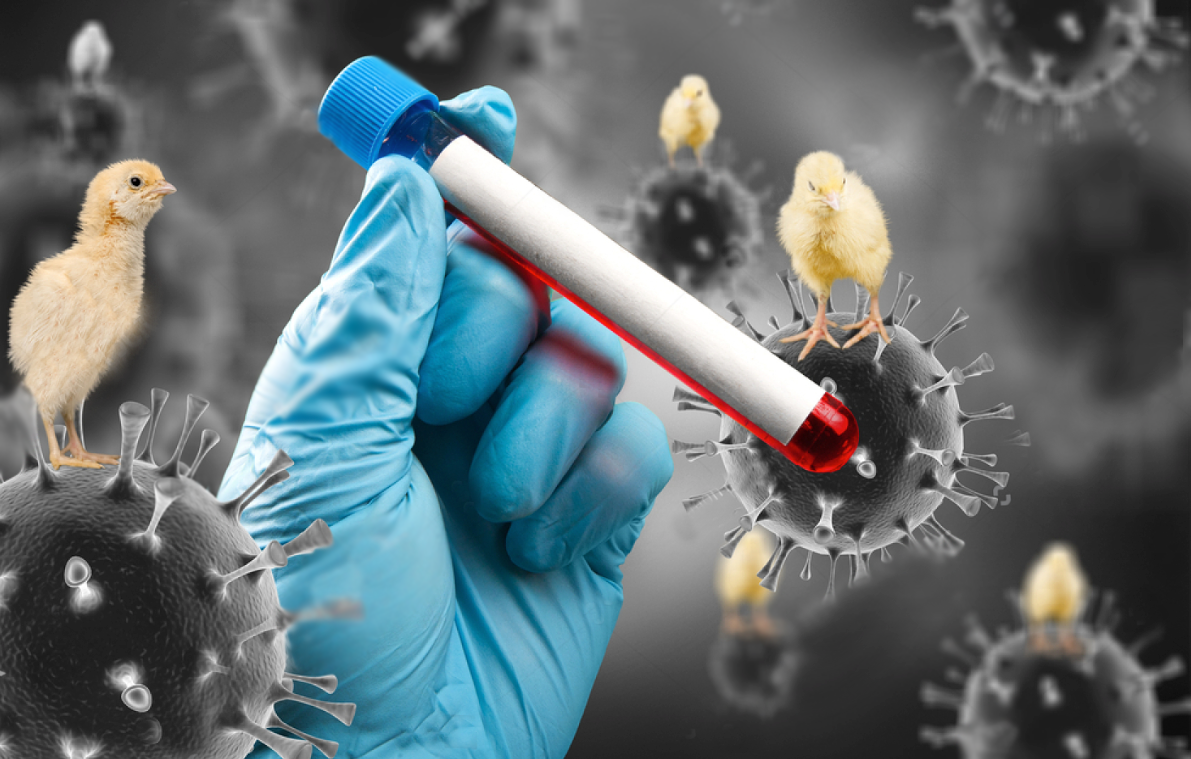On July 19, the CDC posted an update1 on H5N1 avian influenza (bird flu) cases reported so far this year in the U.S., linked to a multistate outbreak in dairy cows and other animals. In the wake of the COVID-19 pandemic, these cases have raised concerns about the H5N1 virus potentially becoming the next significant infectious threat to humans. In this blog, we will explore the H5N1 virus and the nature of the infection.
The Evolution of HPAI A(H5N1) Viruses
Since 2005, Highly Pathogenic Avian Influenza (HPAI) A(H5N1) viruses have undergone significant genetic diversification, creating hundreds of genotypes through reassortment with other avian influenza A viruses.2 The emergence of clade 2.3.4.4b HPAI A(H5N1) viruses in 2020 marked a critical development, with these viruses reaching North America by late 2021. Globally, the 2.3.4.4b clade has become pervasive, causing record numbers of outbreaks among wild birds and poultry across numerous countries.
The Animal and Plant Health Inspection Service (APHIS) of the U.S. Department of Agriculture (USDA) monitors avian influenza A viruses in wild, commercial and backyard birds. Between January 2022 and June 2024, APHIS reported over 9,300 detections of HPAI A(H5)/A(H5N1) viruses in wild birds across 50 states and territories and more than 1,140 detections in commercial and backyard flocks, impacting over 96.5 million birds in 48 states.
The Journey of HPAI A(H5N1) Infections to Mammals
Since 2003, sporadic HPAI A(H5N1) infections have been documented in a diverse array of mammal species worldwide, typically involving animals that consumed infected birds or were exposed to environments with high viral concentrations.3 Notable cases include infections in a polar bear in the U.S., farmed mink in Spain, farmed foxes and other mammals in Finland and seals in the U.S. and South America.
As of July 2024, the USDA has reported over 150 cases of H5N1 avian influenza in dairy cows across 13 U.S. states. Dairy cows are a “new and unexpected host” of the H5N1 virus; the spread of the virus among cows suggests potential for mutation, facilitating transmission to other animals or humans. Although the disease appears to be milder in cows, this could make it more difficult to track as mild symptoms may not be detected or be considered significant enough to initiate testing.
Experimental studies using the ferret model have assessed the transmissibility and severity of H5N1 clade 2.3.4.4b viruses. One study demonstrated that while direct contact transmission among ferrets was efficient, respiratory droplet transmission was less efficient. Importantly, all experimentally infected ferrets experienced fatal disease.4
Human Cases and Risks to the General Public
Despite the widespread circulation of H5N1 viruses among wild birds and poultry, relatively few human cases have been reported in the past several years. From January 2022 to June 2024, there were 29 reported human cases of H5N1 avian influenza across nine countries, including 15 severe or critical cases and seven deaths. Most human cases involved recent exposure to sick or dead poultry, with no identified instances of human-to-human transmission.
As of the CDC update on July 19, there have been ten cases of H5 type avian influenza reported in the U.S. this year. Four cases were associated with exposure to sick dairy cows and six with exposure to H5N1-infected poultry. All reported cases this year have been in Colorado, Michigan and Texas. One other confirmed H5N1 case occurred in 2022, involving a Colorado poultry worker exposed to sick birds.
Genetic analyses show that H5N1 viruses infecting humans may undergo intra-host evolution, resulting in changes that allow more efficient replication in the lower respiratory tract or extrapulmonary tissues.5
Occupational Exposure and Vigilance
At present, the general public’s risk of contracting H5N1 avian influenza is low, except for those in close contact with infected animals. Symptoms range from no symptoms to mild flu-like illness to severe illness requiring hospitalization. The dairy worker infected in the U.S. in April reported mild symptoms, mainly conjunctivitis. Other common symptoms are those usually associated with influenza: cough, fatigue, fever, headaches, muscle or body aches, runny nose and shortness of breath. Less common presentations include gastrointestinal symptoms and even seizures.
Healthcare providers must not overlook occupational exposures when evaluating patients with flu-like symptoms. With rising rates of H5N1 infection in new animal hosts, this step is crucial. Providers should inquire about their patients’ work, particularly if they have direct contact with dairy cows, poultry, pigs, wild birds or other mammals. This vigilance is essential for accurately diagnosing and managing potential H5N1 infections.
In our next blog, we will continue exploring other aspects of H5N1 avian influenza, including the current laboratory testing status, lessons learned from COVID-19 and the CDC’s strategic preparedness. Stay tuned!
1 CDC A(H5N1) Bird Flu Response Update, July 19, 2024. https://www.cdc.gov/bird-flu/spotlights/h5n1-response-07192024.html
2 Bevins SN, Shriner SA, Cumbee JC Jr, Dilione KE, Douglass KE, Ellis JW et al. Intercontinental Movement of Highly Pathogenic Avian Influenza A(H5N1) Clade 2.3.4.4 Virus to the United States, 2021. Emerg Infect Dis. 2022 May;28:1006-1011.
3 Global Avian Influenza Viruses with Zoonotic Potential situation update, 28 March 2024. https://www.fao.org/animal-health/situation-updates/global-aiv-with-zoonotic-potential/en
4 Restori KH, Septer KM, Field CJ, Patel DR, VanInsberghe D, Raghunathan V, Lowen AC, Sutton TC. Risk assessment of a highly pathogenic H5N1 influenza virus from mink. Nat Commun. 2024 May 15;15(1):4112.
5 CDC. Technical Update: Summary Analysis of Genetic Sequences of Highly Pathogenic Avian Influenza A(H5N1) Viruses in Texas. April 2, 2024. Accessed at: https:// www.cdc.gov/bird-flu/spotlights/h5n1-analysis-texas.html

